
Pleasantly sweet and tart, passion fruit, also known as granadilla, is brimming with numerous plant derived health benefiting nourishment essentials for the optimum growth. Passions are native to subtropical wild regions of South America, probably originated in Paraguay. The plant is a avid climber (vine) which grows on anything that it can grapple around through its tendrils.
Botanically, this exotic fruit belongs to the family of Passifloraceae, in the genus; Passiflora. Scientific name:Passiflora edulis.
The passiflora plant requires well-drained fertile soil, and good moisture to flourish. Once established, it grows quickly and reaches about 15-20 feet per year. The plant has an average life span of about 5-7 years.
Over five hundred cultivate types of passions exist; however, only two main types, purple and yellow cultivars, are widely cultivated. Banana passion fruit (P. tripartita var. mollissima), known locally as curuba de castilla, features small banana fruit like shape with rounded ends. During each season, the vine bears greenish-white fragrant flowers which subsequently develop into fruits.
Passion fruit features round to oval shape, 4 to 8 centimeters in diameter, have a tough outer shell (rind) as that of in mangosteen. Average weight is about 35-50 g.
Inside, the fruit consists of membranous sacs containing light orange-color, pulpy juice with numerous small, hard, dark-brown or black, pitted seeds. Yellow passions are generally larger than the purple varieties, but the pulp of the purple fruit is less acid, richer in aroma and flavor, and has a higher proportion of juicy pulp.
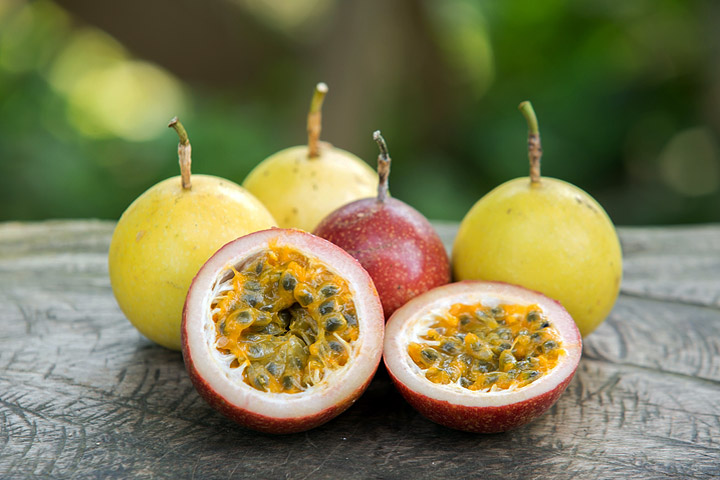
Health benefits of passion fruit
- Delicious, passion fruit is rich source of antioxidants, minerals, vitamins, and fiber. 100 g fruit contains about 97 calories.
- The fruit is a very good source of dietary fiber. 100 g fruit pulp contains 10.4 g or 27% of fiber. Good fiber in the diet helps remove cholesterol from the body. Being a good bulk laxative, it also helps protect the colon mucous membrane by decreasing exposure time to toxic substances in the colon and wiping off cancer-causing toxic substances from the colon.
- Passion fruit is good in vitamin C, providing about 30 mg per 100 g. Vitamin-C (ascorbic acid) is a powerful water soluble anti-oxidant. Consumption of fruits rich in vitamin C helps the body develop resistance against flu-like infectious agents and scavenge harmful, pro-inflammatory free radicals.
- The fruit carry very good levels of vitamin-A (provides about 1274 IU per 100 g), and flavonoid antioxidants such as ß-carotene and cryptoxanthin-ß. Current research studies suggest that these compounds have antioxidant properties, and along with vitamin A are essential for good eye-sight.
- Vitamin A is also required for maintaining healthy mucus membranes and skin. Consumption of natural fruits rich in vitamin-A, and flavonoids may helps to protect from lung and oral cavity cancers.
- Fresh granadilla is very rich in potassium. 100 g fruit pulp has about 348 mg of potassium. Potassium is an important component of cells and body fluids, and helps regulate heart rate and blood pressure.
- Furthermore, granadilla is a very good source of minerals. Iron, copper, magnesium and phosphorus are present in adequate amounts in the fruit.
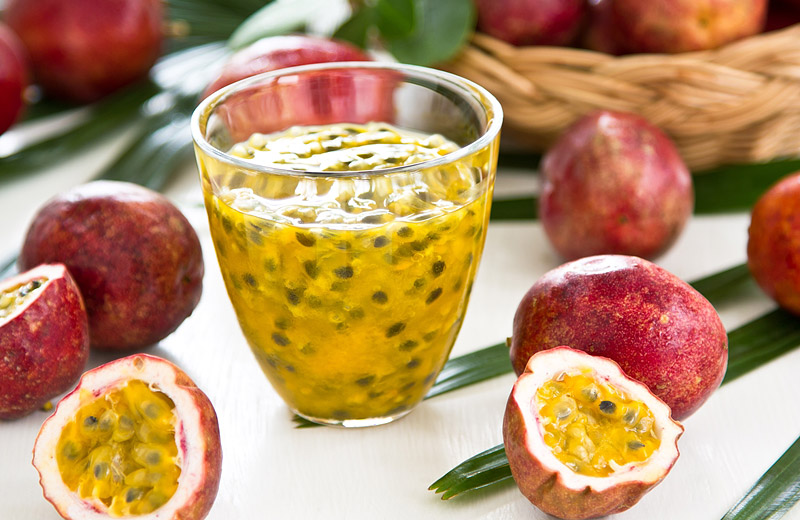
Selection and storage
Passion fruits can be available year around in the super-markets in the United States. In other parts of the world, their availability is seasonal and varies accordingly. In New Zealand, the passion fruit season begins from January, and peaks by April.
In the stores, buy fruits that are well ripe, plump and heavy for their size. Fruits with wrinkle surface are actually more flavorful and rich in sugar.
Avoid overtly mature fruits. Minor cuts and spots are common on the skin. Such small abrasions on the fruit surface usually do not influence the quality of the fruit.
Once at home, keep them in fruit basket and place in cool dark place where they stay well for 1-2 days. Ripe fruits may be kept inside the refrigerator for up to one week. Additonally, passion fruit freezes well. Simply scoop the pulp into a bowl, add a little sugar, and freeze in the chillier tray.
Preparation and serving method
Wash fruit in cold water, and pat-dry them using a soft cloth or paper. Cut the fruit lengthwise into two equal halves. Then, scoop out the juicy pulp with a spoon. Discard the tough shell.
Passion fruits have unique tart, and sweet-flavor and sweet taste. Purple passion fruits are generally smaller but more flavorful than yellow-golden passions.
Here are some serving tips:
- Passion fruit can be enjoyed fresh, especially when the fruit is well ripe. Just scoop out its juicy pulp using a spoon. Its tough shell, anyhow, is inedible.
- Their juicy pulp can also be enjoyed as a refreshing intra-day drink.
- Passions add distinct flavor to fruit salads.
- Passions are used in the preparation of sauce, jellies, and syrups.
- It is employed in various recipes like passion fruit mousse, ice-cream, pizza, desserts, cakes, mousse…etc.
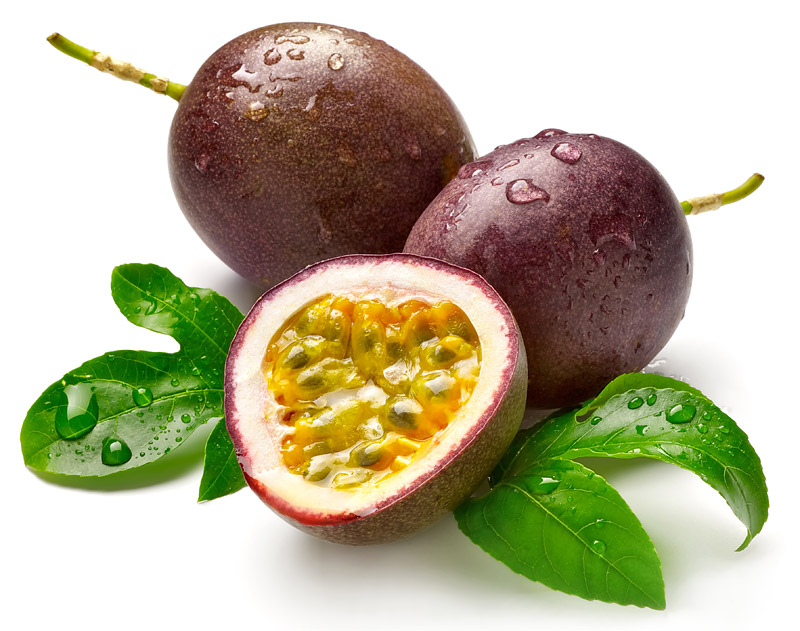
See the table below for in depth analysis of nutrients:Passion fruit (Passiflora edulis), Fresh,
Nutritive Value per 100 g.(Source: USDA National Nutrient data base)
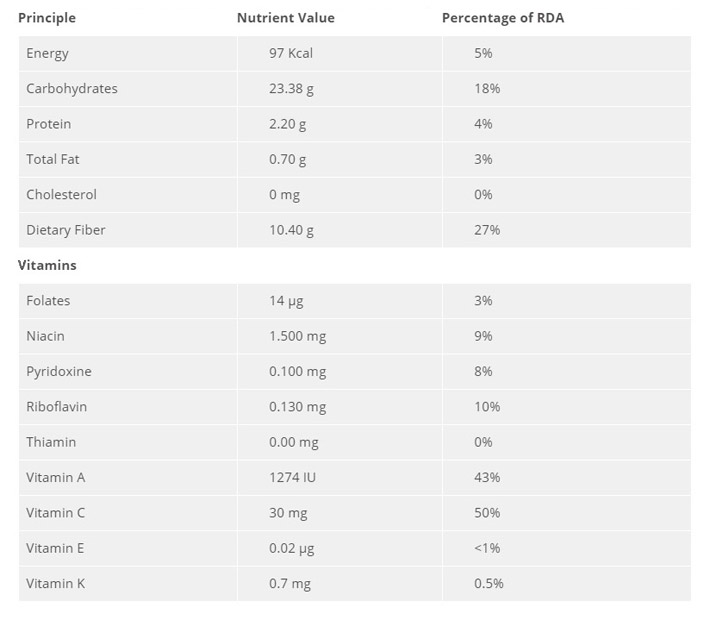
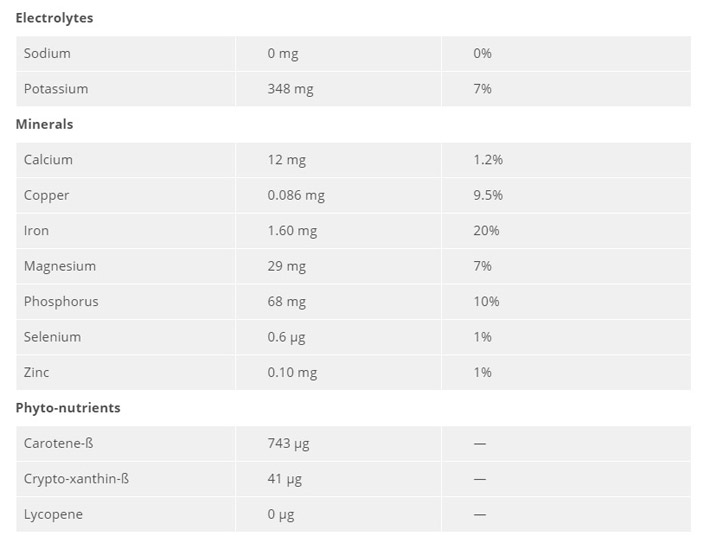

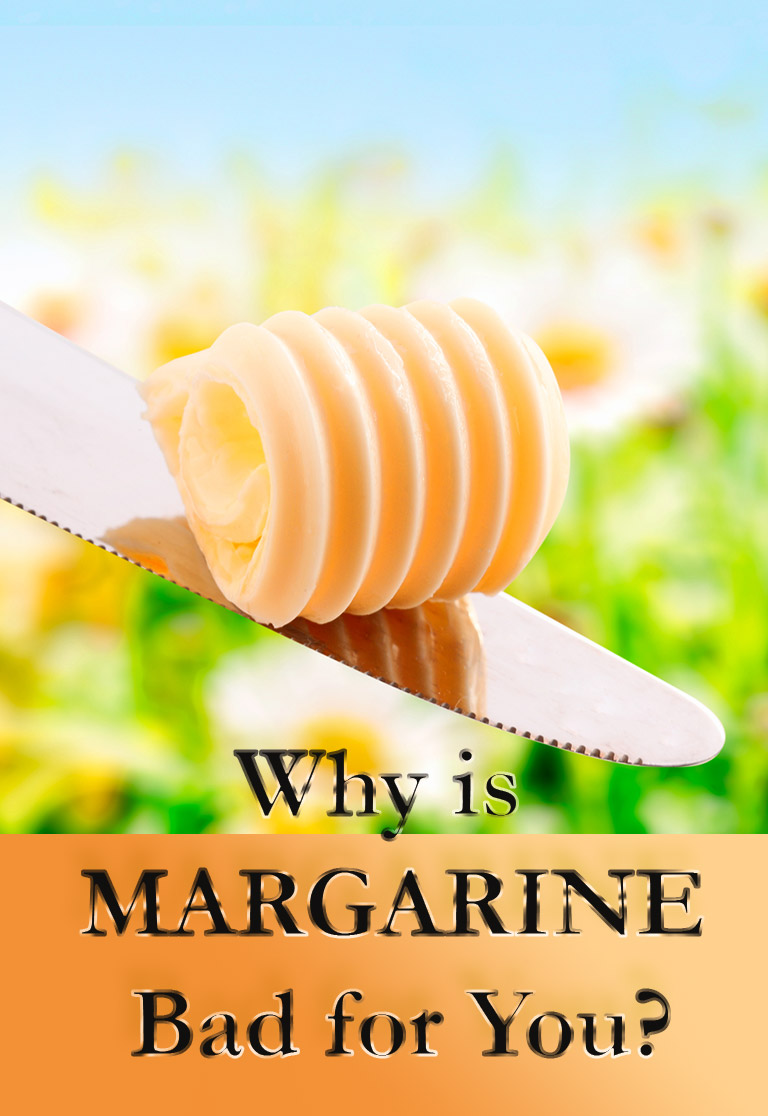


Leave a Reply